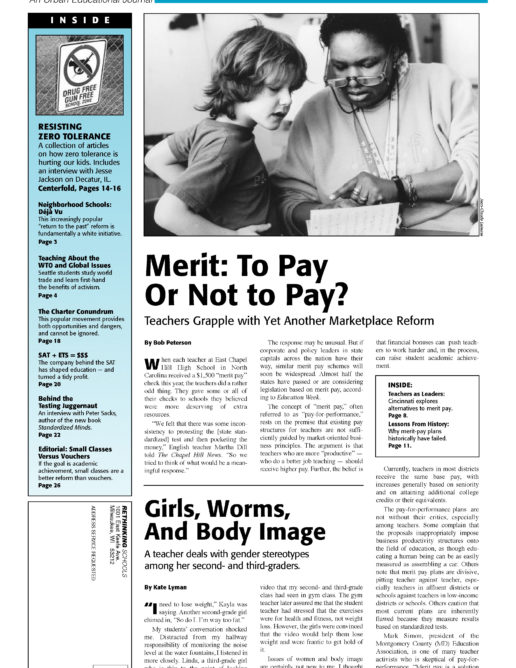Preview of Article:
Wisconsin Reports on Voucher Program
Program cannot document whether academic achievement is rising for participating students.
By Barbara Miner
A recent legislative report on the Milwaukee voucher program found that participating private schools provide a variety of educational programs and are located throughout the city, but noted that “some hopes for the program – most notably, that it would increase participating pupils’ academic acheivement – cannot be documented.”
The report is the only official document that provides a current overview of the Milwaukee voucher initiative, officially known as the Milwaukee Parental Choice Program. The report covers the 1998-99 school year, when religious schools were involved for the first time and the program vastly expanded. The report was released Feb. 2 by the state’s non-partisan Legislative Audit Bureau.
The report provides some previously unavailable information, such as the racial breakdown of students receiving the vouchers. It also includes responses to a survey of voucher school parents, which shows them to be generally satisfied with the schools their children attend.
There is little to no information in a number of areas, from academic achievement, to special education services, to the overall racial breakdown of the private voucher schools.</p

